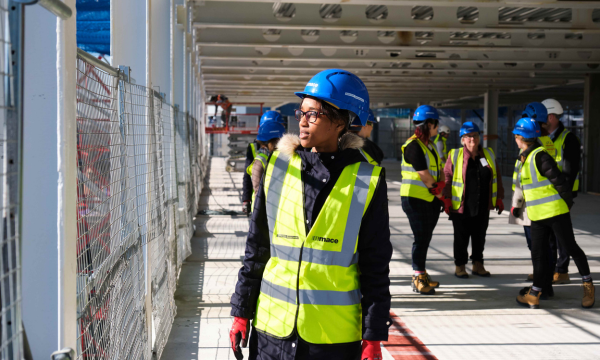Construction workloads in Wales continued to rise through the second quarter of the year according to the latest Royal Institution of Chartered Surveyors (RICS) Construction Monitor, underpinned by activity in both public and private housing.
A net balance of 22% of surveyor respondents in Wales reported a rise in overall construction activity, which is the highest this balance has been since early 2022. This includes increases in both public and private sector housebuilding activity, with a net balance of 38% of respondents noting a rise in public housing workloads and a net balance of 24% reporting there was an increase in the private sector.
Looking at the other subsectors, ‘other public works’ (a net balance of 13%), private commercial (a net balance of 29%) and infrastructure (a net balance of 11%) workloads saw increases in activity, whilst the private industrial sector was the only one to see a decline, with a net balance of -25% of Welsh respondents reporting a fall.
Surveyors in Wales remain optimistic about future workloads, according to the survey, but less so than seen previously. A net balance of 14% of respondents expect an increase over the next year, which is down from the 20% that was reported in the first quarter of the year.
When it comes to profit margins, surveyors in Wales expect that these to be fall flat over the next 12-months. Whilst this figure is subdued, it is up from the net balance of -7% that was reported in the survey previous.
Welsh surveyors continue to report shortages in skilled workers. 58% report a shortage in quantity surveyors, 46% note a shortfall in other construction professionals and 47% report a deficit in bricklayers, all of which were similar figures reported in the first survey of the year.
Despite the continuing growth in workloads in the sector, survey respondent Richard Blakemore of FR Consultants Ltd in Barmouth noted that there are Building Safety Regulator decision delays.
Robert Davies of Penfro Consultancy Limited also said:
“A lack of clear visibility of local government expenditure and the protracted planning process are impacting release of projects to the construction delivery phase.”
Sam Rees, interim head of public affairs UK&I at RICS, added:
“It’s encouraging to see construction activity picking up in Wales and housing being the main driver. This was also evidenced in NHBC’s most recent quarterly report which also shows a rise in the number of new homes registered in Wales. However, it is important to note that even with an uplift in activity, there is still much progress to be made in building enough homes to meet housing need. The Welsh Government has an ambitious target of creating 20,000 homes by next year, and it’s hoped this momentum can continue, particularly in regard to social and affordable housing.”
Commenting on the UK picture, RICS Chief Economist, Simon Rubinsohn, said:
“The underlying tone in the construction sector remains subdued according to the latest feedback from RICS members. There is a little more positivity looking forward but the indicators, at this point, are consistent with a modest rather than material uplift in development.
“Given that planning continues to be viewed as the major factor hindering the industry from upscaling its building programme, it is quite conceivable that the passing of the Planning and Infrastructure Bill will in due course see industry expectations move onto a firmer footing. That said, the need to ensure the building safety regime works more smoothly is also highlighted quite widely in the survey as a factor that would likely impact the pace of development.
“The other big challenge remains around skills. While typically much of the conversation is focused of shortages of trades such as bricklayers and plumbers, the RICS survey highlights recruitment issues amongst professionals involved in the construction industry with building control surveyors and quantity surveyors in short supply.”
